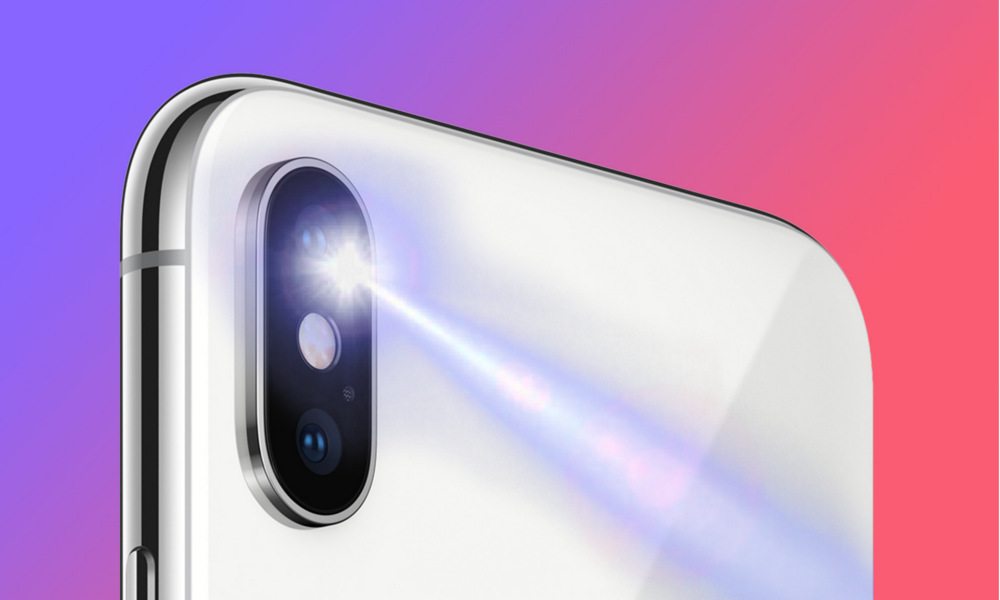The 2020 iPhone Is Getting This Very Cool 3D Laser Camera System
 Credit: Apple
Credit: Apple
Toggle Dark Mode
With this year’s iPhones pretty much locked down in terms of what to expect, we’re now starting to hear more about what Apple has in store for next year’s iPhone lineup. Although we already know some of the big things — a 5G iPhone is a given, and we’re expecting to see some significant size changes, other details are only starting to come into focus.
A new report from DigiTimes adds more weight to earlier reports that Apple is working on a pretty significant camera upgrade for the 2020 iPhone lineup, which will finally include the 3D sensing “Time of Flight” (ToF) camera sensors that we’ve been hearing about for a while now. According to the report, Apple has asked at least one of its manufacturing partners to prepare key components used in a ToF camera implementation, known as a Vertical-cavity Surface-Emitting Laser, or VCSEL for short.
VCSEL is the same technology used to power Apple’s TrueDepth camera on the front of its iPhone X series models for features such as Face ID. Adding it to the rear camera, however, would open up a whole new world of possibilities for augmented reality applications and improved photo capturing. Further, although Apple has already done some pretty magical things with features like Portrait Mode and Portrait Lighting, a VCSEL camera system on the main cameras would vastly improve the quality and performance of these features and likely allow Apple to build even cooler photographic effects and techniques into the iPhone camera system.
Of course, we’ve been hearing about this for a while — earlier reports predicted it would be arriving in 2019 — however most of these rumours are based on supplier reports, and since the front TrueDepth camera also uses VCSEL technology, Apple’s purpose for these components isn’t always clear. For instance, a 2017 report that Apple was ordering millions of VCSELs for the “iPhone 8” (which ultimately turned out to be the iPhone X) were actually for the company’s first implementation of Face ID.
How is a Time-of-Flight 3D Rear Camera Different?
Even though TrueDepth uses the same kind of VCSEL technology, it’s not an actual Time-of-Flight (ToF) system, so Apple’s use of the technology for the rear camera would be fundamentally different.
Most significantly, the TrueDepth camera is only designed to work over short distances, using a structured-light technique that paints the user’s face with 30,000 invisible laser dots in order to generate an accurate 3D image at a very short range. By comparison, a ToF system is key to measuring objects over much longer distances, and works by calculating the time it takes for the laser to bounce off the surrounding objects in both the foreground and background. This provides an extremely accurate measurement of how far away objects are relative to each other, offering reliable data for both depth of field photography and placement of virtual objects in an AR landscape.
To put it in perspective, while Apple’s TrueDepth camera found on all iPhone X series models only works at distances of around one to two feet, reports suggest that Apple’s 2020 iPhones will be able to scan areas of up to 15 feet from the device.
Apple has likely been working on putting this technology into the iPhone for at least three years now, and there’s no doubt that the TrueDepth and Face ID camera system was simply the first step toward this much more ambitious goal. Most analysts suggest that the company has a two-year lead over its rivals in this area, both because of its research and development as well as its success in locking down supplies of the necessary hardware well in advance.
Why Has It Taken So Long?
In addition to making sure the technology itself meets Apple’s standards, there’s also a need to make sure that accompanying features are up to speed as well. Analysts such as Ming-Chi Kuo have previously suggested that Apple is waiting until things like 5G connectivity, more advanced ARKit technology, and a more powerful Apple Maps database are in place to allow it to fully take advantage of what an ToF sensor can do. This makes sense, since Apple rarely introduces features to the iPhone without also providing demonstrable practical applications for them.
It’s pretty clear, however, that 2020 is shaping up to be a groundbreaking year for iPhone technology, and it’s likely that the rumours we’re hearing now are just the tip of the iceberg in terms of what we’ll be seeing in next year’s iPhone lineup.
[The information provided in this article has NOT been confirmed by Apple and may be speculation. Provided details may not be factual. Take all rumors, tech or otherwise, with a grain of salt.]






